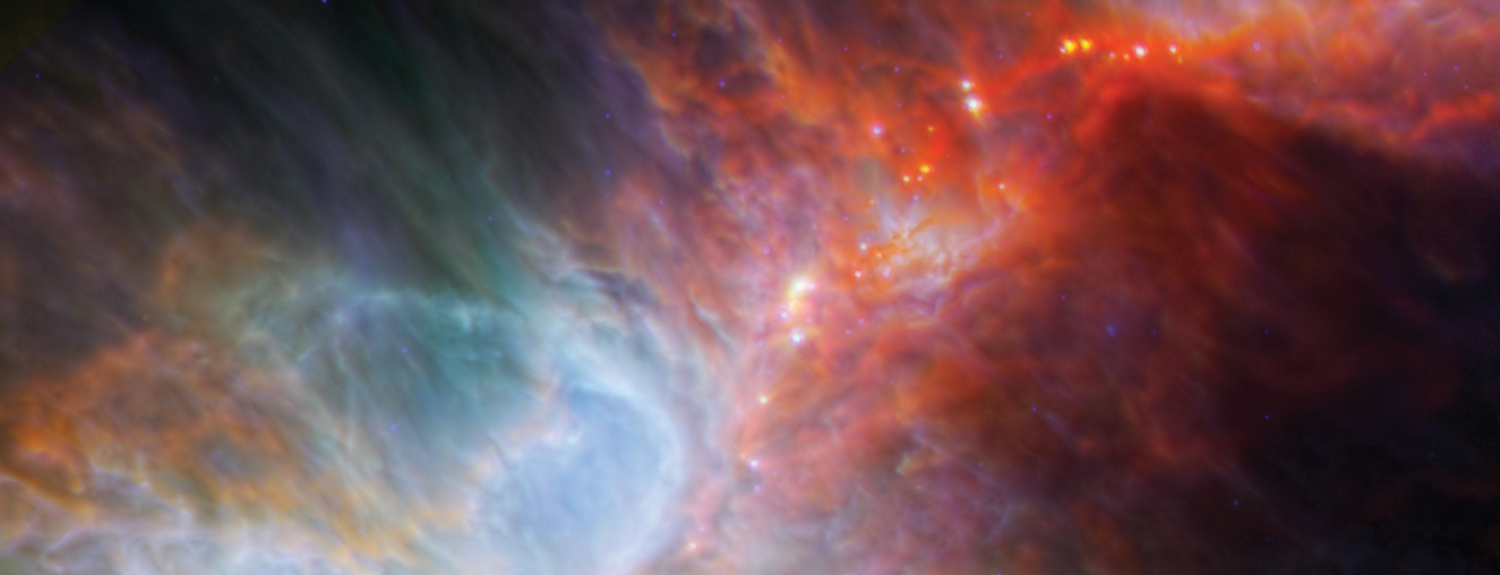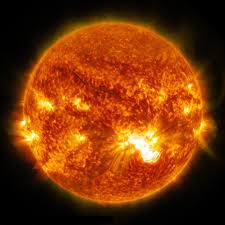
Minnesota Skies: January 2020
Your local guide to observing celestial objects and events
Published12/18/2019 , by Deane Morrison, Thaddeus LaCoursiere & Sarah Komperud
Set against the cold morning sky, the warm red of Mars and its stellar counterpart Antares lends a note of cheer to the January darkness.
Mars begins the year as a glimmering red dot somewhat low in the southeast, above Antares, the heart of Scorpius. Day by day, the stars of Scorpius approach and sweep past Mars. Between the 6th and 9th, the three stars known as the Crown of Scorpius sail by the red planet. Earth’s orbital motion is pushing both Mars and the stars of Scorpius westward, but the stars outstrip Mars because the planet, moving eastward in its own orbit, is able to slow its drift.
Before Scorpius gets too far west, we have a good chance to compare Mars to gigantic Antares, the red star whose name means rival, or antagonist, of Mars. The star and planet come closest on the 18th, when they’ll be 4.8 degrees apart, with Antares to the lower right of Mars. Mars and its rival are now of comparable brightness, but Mars is slowly cranking up the wattage. A waning crescent moon hangs above the pair on the 20th.
Jupiter breaks into the southeastern morning sky late in the month. Saturn follows, but won’t be easily visible until February. Both planets will rendezvous with Mars before winter is over.
In the west, Venus dominates the early evening sky. As the month goes by, Venus climbs toward the slightly dim, ring-shaped Circlet of Pisces. Above the Circlet, the Great Square of Pegasus is now tipped as it heads into the sunset, along with the Circlet and other autumn stars. On the 27th and 28th, a waxing crescent moon appears with Venus.
January’s full moon arrives at 1:21 p.m. on the 10th, just a few hours before rising for the night. It travels the night sky near the Gemini twins Pollux (the brighter) and Castor.
Earth reaches perihelion, its closest approach to the sun in an orbit, on the 5th. At that point we’ll be 91.4 million miles from our parent star. We in the Northern Hemisphere can feel lucky that perihelion happens during winter, because the nearer the Earth is to the sun, the faster it moves along in its orbit. That means it moves through the fall and winter part of its orbit faster than it moves through the spring and summer part. As a result, the Northern Hemisphere gets about five more days of spring and summer than does the Southern Hemisphere.
Excerpted from Minnesota Starwatch by Deane Morrison, a publication of the Minnesota Institute for Astrophysics at the U of M.
Featured image: The Orion Nebula, NASA/JPL-Caltech. Date created: April 16, 2007 See “Deep Sky Objects” below for more.
Lunar Highlights
January 2—First Quarter Moon
The Moon is one quarter of its way through its orbit around
the Earth, which makes half the Moon illuminated and half
dark from our perspective.
January 10—Full Moon
The Moon is located on the opposite side of the Earth as the
Sun and the side we see is fully illuminated.
January 17—Last Quarter Moon
This phase occurs when the Moon is three-quarters of the
way through its orbit around the Earth.
January 24—New Moon
The Moon is located on the same side of the Earth as the Sun
and is not visible in the night sky. This is the best time of the
month to observe faint objects like galaxies and star clusters
because there is no moonlight to interfere.
Deep Sky Objects
The winter is an excellent time to view the night sky. High above our heads, the magnificent arch of the Milky Way fills the sky, visible for hours with the little sunlight we have, a sight only obscured by the falling snow and city lights. And even as the cold temperatures drive us inside, the winter sky is utterly filled with astronomical objects that are easy to find and stunning to look at (before your eyeballs freeze).
Astronomers have to get used to dealing with large numbers, but the estimated 400 billion stars that fill the entire Milky Way galaxy is astounding. The collection of stars, along with gas and dust, creates a hazy band above our heads. On a smaller scale we can see where some of these stars come from. Looking to the southeast, in between the zenith and horizon, we can find Orion, the Hunter. Easily recognizable from his three belt stars, we can look right below to the string of stars hanging off his belt, Orion’s “sword.” Looking at the sword under dark skies, keen-eyed observers may spot a little fuzziness near the center star. Picking up a pair of binoculars, or looking through the eyepiece of a telescope, you make out the clouds of the Great Orion Nebula, or M42.


